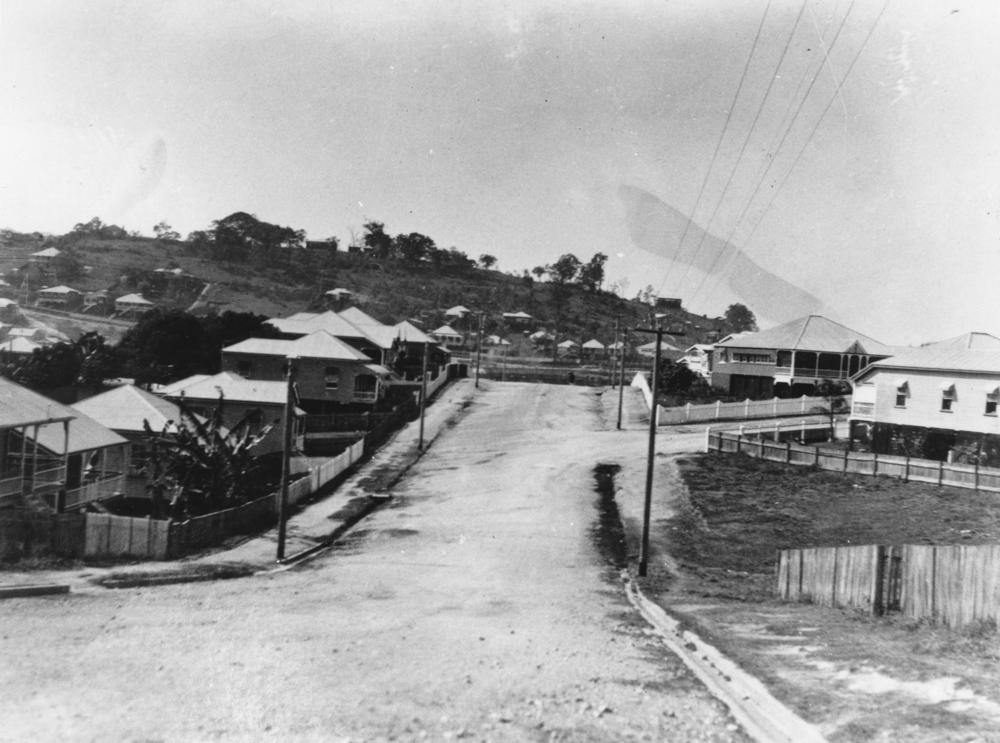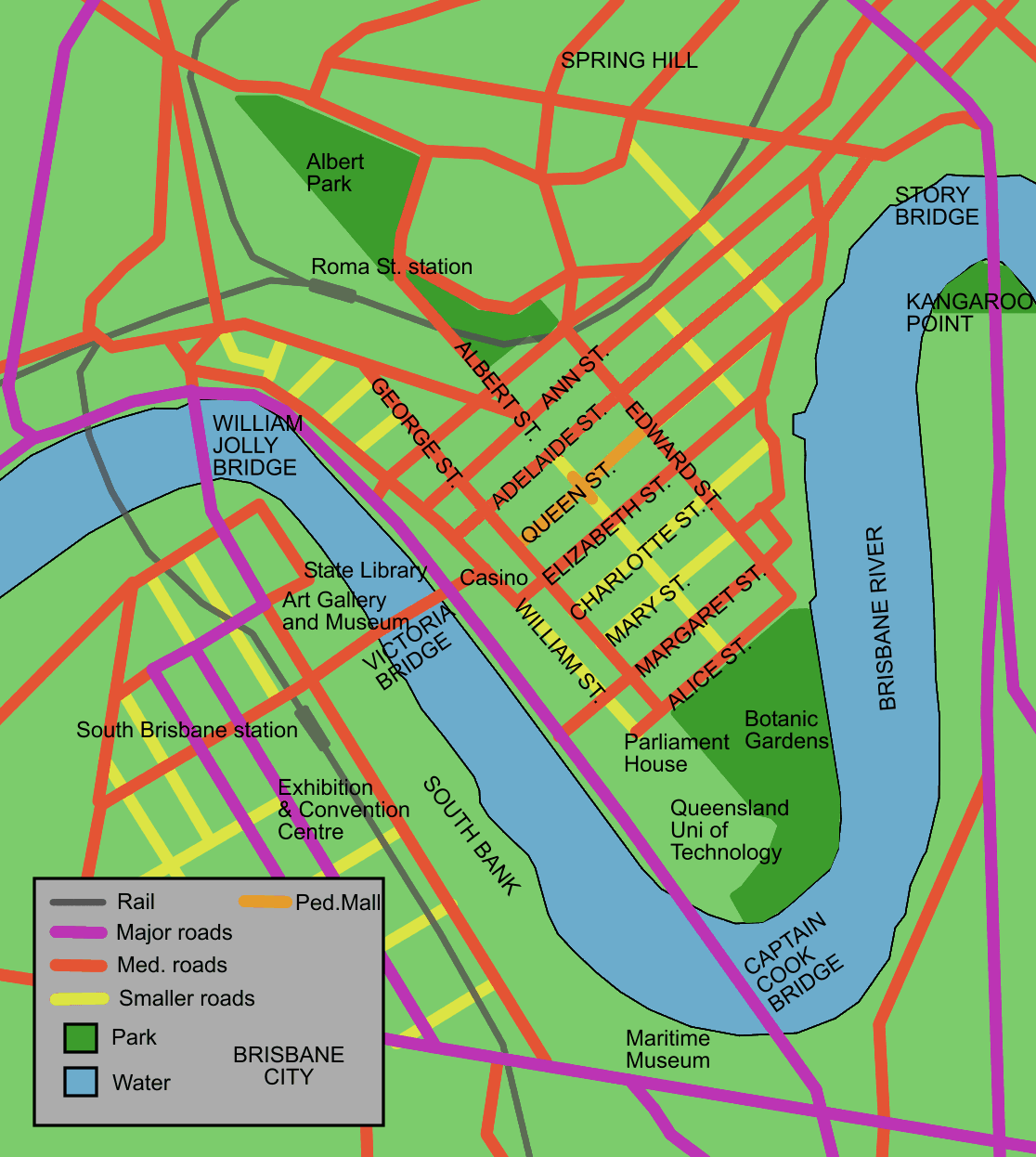|
Grange, Queensland
Grange is a northern suburb in the City of Brisbane, Queensland, Australia. In the , Grange had a population of 4,318 people. Geography Grange is located north of the Brisbane central business district, on the southern side of Kedron Brook. It is sometimes referred to as The Grange. There is a hill in the west of the surbub called The Pinnacle () rising to above sea level. History Prior to the arrival of British settlers, the Grange area consisted of areas of open grassland and thinly wooded plains. In the 1860s fellmonger T. K. Peate established The Grange Tannery and Fellmongery Company on Kedron Brook. Suburban development of the area commenced in 1903 with the subdivision of T. K. Peate's property into "the Grange Estate". The name of the suburb is derived from that of Peate's property: "Grange" is believed to be an Old English word meaning granary. Many houses in the suburb are of the Queenslander architectural style. In about March 1918 a block of land was purch ... [...More Info...] [...Related Items...] OR: [Wikipedia] [Google] [Baidu] |
AEST
Australia uses three main time zones: Australian Western Standard Time (AWST; UTC+08:00), Australian Central Standard Time (ACST; UTC+09:30), and Australian Eastern Standard Time (AEST; UTC+10:00). Time is regulated by the individual state governments, some of which observe daylight saving time (DST). Australia's external territories observe different time zones. Standard time was introduced in the 1890s when all of the Australian colonies adopted it. Before the switch to standard time zones, each local city or town was free to determine its local time, called local mean time. Now, Western Australia uses Western Standard Time; South Australia and the Northern Territory use Central Standard Time; while New South Wales, Queensland, Tasmania, Victoria (Australia), Victoria, Jervis Bay Territory, and the Australian Capital Territory use Eastern Standard Time. Daylight saving time (+1 hour) is used in jurisdictions in the south and south-east: South Australia, New South Wales, Vict ... [...More Info...] [...Related Items...] OR: [Wikipedia] [Google] [Baidu] |
Brisbane Central Business District
Brisbane City is the central suburb and central business district of Brisbane, the state capital of Queensland, Australia. It is colloquially referred to as the "Brisbane CBD" or "the city". It is located on a point on the northern bank of the Brisbane River, historically known as ''Meanjin'', ''Mianjin'' or ''Meeanjin'' in the local Aboriginal Australian dialect. The triangular shaped area is bounded by the median of the Brisbane River to the east, south and west. The point, known at its tip as Gardens Point, slopes upward to the north-west where the city is bounded by parkland and the inner city suburb of Spring Hill to the north. The CBD is bounded to the north-east by the suburb of Fortitude Valley. To the west the CBD is bounded by Petrie Terrace, which in 2010 was reinstated as a suburb (after being made a locality of Brisbane City in the 1970s). In the the suburb of Brisbane City had a population of 9,460 people. Geography The Brisbane central business district is ... [...More Info...] [...Related Items...] OR: [Wikipedia] [Google] [Baidu] |
Charles Taylor (Queensland Politician)
Charles Taylor (24 March 1861 – 27 April 1944) was a member of the Queensland Legislative Assembly. He was born in Melbourne, Victoria, the son of the George Taylor and his wife Mary Albina (née Holder). After attending the Church of England school in Ballarat he was an agent for a produce firm in Sydney, before running a seed and produce agency in Brisbane. On 31 January 1884, Taylor married Emma Jane Skewes (died 1942)Family history research — births, deaths, marriages, and divorces. Retrieved 25 April 2016. in Ballarat and together had two sons and a daughter. He died in Brisbane in April 1944 a ... [...More Info...] [...Related Items...] OR: [Wikipedia] [Google] [Baidu] |
Queensland Legislative Assembly
The Legislative Assembly of Queensland is the sole chamber of the unicameral Parliament of Queensland established under the Constitution of Queensland. Elections are held every four years and are done by full preferential voting. The Assembly has 93 members, who have used the letters MP after their names since 2000 (previously they were styled MLAs). There is approximately the same population in each electorate; however, that has not always been the case (in particular, a malapportionment system - not, strictly speaking, a gerrymander - dubbed the ''Bjelkemander'' was in effect during the 1970s and 1980s). The Assembly first sat in May 1860 and produced Australia's first Hansard in April 1864. Following the outcome of the 2015 election, successful amendments to the electoral act in early 2016 include: adding an additional four parliamentary seats from 89 to 93, changing from optional preferential voting to full-preferential voting, and moving from unfixed three-year terms t ... [...More Info...] [...Related Items...] OR: [Wikipedia] [Google] [Baidu] |
William Jolly
William Alfred Jolly CMG (11 September 1881, Spring Hill, Brisbane – 30 May 1955, Windsor, Brisbane) was an Australian politician who was the Mayor of the Town of Windsor from 1918 to 1923, the first Lord Mayor of Brisbane from 1925 to 1931, and a member of the Australian Parliament for the Division of Lilley from 1937 to 1943. Public life In 1914, he began to practice as a public accountant. Upon the establishment of the Institute of Chartered Accountants in Australia Jolly was elected a member of the first Board. He was the director of the National Bank of Australia after it merged with the Queensland National Bank. He was councillor of Kings College at the University of Queensland, a member of the Board for the YMCA and a long-term member of the Brisbane Rotary Club. He was elected an alderman of the Windsor Town Council in 1912, becoming the Mayor between 1918 and 1923. In 1925, the present City of Brisbane was created through the amalgamation of the city (which pre ... [...More Info...] [...Related Items...] OR: [Wikipedia] [Google] [Baidu] |
Lord Mayor Of Brisbane
The Lord Mayor of Brisbane is the chief executive of the City of Brisbane, the capital of the Australian state of Queensland, and the head of the Brisbane City Council. Lord Mayor Adrian Schrinner of the Liberal National Party was sworn in on 8 April 2019, following the resignation of Graham Quirk. The Lord Mayor serves a four-year term running concurrently with that of the City Council, and is elected by optional preferential voting. As Brisbane is by far the largest local government area in Australia, the Lord Mayor is elected by the largest single-member electorate in the Commonwealth. Like all mayors in Queensland, the Lord Mayor has broad executive powers and additional civic and ceremonial duties. The Lord Mayor is responsible for policy development, implementing policies enacted by the council, leading and controlling the business of council, preparing the budget and directing the chief executive and senior managers.{{Cite web, url=https://www.legislation.qld.gov.au/L ... [...More Info...] [...Related Items...] OR: [Wikipedia] [Google] [Baidu] |
Trams In Brisbane
The Brisbane tramway network served the city of Brisbane, Australia, between 1885 and 1969. It ran on standard gauge track. The electric system was originally energised to 500 volts, and subsequently increased to 600 volts. All tramcars built in Brisbane up to 1938 had an open design. This proved so popular, especially on hot summer nights, that the trams were used as fundraisers and often chartered right up until the last service by social groups. Most trams operated with a two-person crew – a driver (or motorman) and a conductor, who moved about the tram collecting fares and issuing tickets. The exceptions to this arrangement were on the Gardens line (Lower Edward Street) where the short duration of the trip meant it was more effective for passengers to simply drop their fare into a fare box as they entered the tram; and the "one man cars" which operated in the early 1930s (see below). The peak year for patronage was in 1944–45 when almost 160 million passengers were carr ... [...More Info...] [...Related Items...] OR: [Wikipedia] [Google] [Baidu] |
Queensland Family History Society
The Queensland Family History Society (QFHS) is an incorporated association formed in Brisbane, Queensland, Australia. History The society was established in 1979 as a non-profit, non-sectarian, non-political organisation. They aim to promote the study of family history local history, genealogy, and heraldry, and encourage the collection and preservation of records relating to the history of Queensland families. At the end of 2022, the society relocated from 58 Bellevue Avenue, Gaythorne Gaythorne is a suburb in the City of Brisbane, Queensland, Australia. In the , Gaythorne had a population of 3,023 people. Geography Gaythorne is located seven kilometres north-west of the Brisbane central business district. It is bounded to ... () to its new QFHS Family History Research Centre at 46 Delaware Street, Chermside (). References External links * Non-profit organisations based in Queensland Historical societies of Australia Libraries in Brisbane Family hist ... [...More Info...] [...Related Items...] OR: [Wikipedia] [Google] [Baidu] |
The Telegraph (Brisbane)
The ''Telegraph'' was an evening newspaper published in Brisbane, Queensland, Australia. It was first published on 1 October 1872 and its final edition appeared on 5 February 1988. In its day it was recognised as one of the best news pictorial newspapers in the country.Daily Sun, Saturday, 6 February 1988 Its Pink Sports edition (printed distinctively on pink newsprint and sold on Brisbane streets from about 6 pm on Saturdays) was a particularly excellent production produced under tight deadlines. It included results and pictures of Brisbane's Saturday afternoon sports including the results of the last horse race of the day. History In 1871 a group of local businessmen, Robert Armour, John Killeen Handy (M.L.A. for Brisbane), John Warde, John Burns, J. D. Heale and J. K. Buchanan formed the Telegraph Newspaper Co. Ltd. The editor was Theophilus Parsons Pugh, a former editor of the ''Brisbane Courier'' and founder of ''Pugh's Almanac''.Queensland Press Limited history report 19 ... [...More Info...] [...Related Items...] OR: [Wikipedia] [Google] [Baidu] |
The Brisbane Courier
''The Courier-Mail'' is an Australian newspaper published in Brisbane. Owned by News Corp Australia, it is published daily from Monday to Saturday in tabloid format. Its editorial offices are located at Bowen Hills, in Brisbane's inner northern suburbs, and it is printed at Murarrie, in Brisbane's eastern suburbs. It is available for purchase throughout Queensland, most regions of Northern New South Wales and parts of the Northern Territory. History The history of ''The Courier-Mail'' is through four mastheads. The ''Moreton Bay Courier'' later became '' The Courier'', then the ''Brisbane Courier'' and, since a merger with the Daily Mail in 1933, ''The Courier-Mail''. The ''Moreton Bay Courier'' was established as a weekly paper in June 1846. Issue frequency increased steadily to bi-weekly in January 1858, tri-weekly in December 1859, then daily under the editorship of Theophilus Parsons Pugh from 14 May 1861. The recognised founder and first editor was Arthur Sidney Lyon (18 ... [...More Info...] [...Related Items...] OR: [Wikipedia] [Google] [Baidu] |
Queenslander (architecture)
Queenslander architecture is a modern term for a type of residential housing, widespread in Queensland, Australia. It is also found in the northern parts of the adjacent state of New South Wales, and shares many traits with architecture in other states of Australia, but is distinct and unique. The form of the typical Queenslander-style residence distinguishes Brisbane's suburbs from other capital cities. The Queenslander is considered Australia's most iconic architectural style. This style developed in the 1840s and is still constructed today, displaying an evolution of local style. The term is primarily applied to residential construction, although some commercial and other types of construction are identified as Queenslander. Characteristics The quintessential Queenslander is a single detached house made of timber with a corrugated iron roof located on a separate block of land. They are all high-set, single-storey dwellings with a characteristic veranda that extends around ... [...More Info...] [...Related Items...] OR: [Wikipedia] [Google] [Baidu] |



%2C_1930.jpg)

